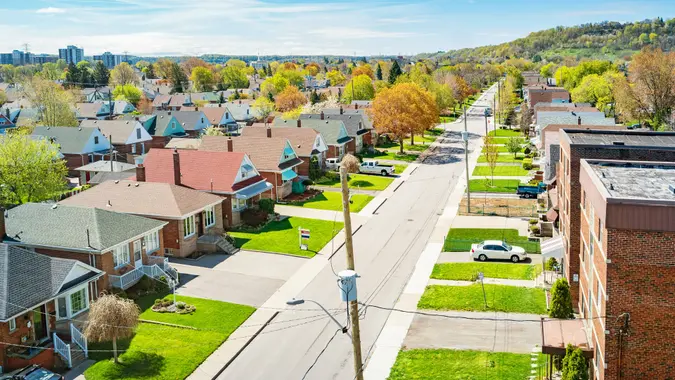5 Things the Middle Class Can’t Afford Anymore

Commitment to Our Readers
GOBankingRates' editorial team is committed to bringing you unbiased reviews and information. We use data-driven methodologies to evaluate financial products and services - our reviews and ratings are not influenced by advertisers. You can read more about our editorial guidelines and our products and services review methodology.

20 Years
Helping You Live Richer

Reviewed
by Experts

Trusted by
Millions of Readers
In recent years, economic shifts have reshaped the financial landscape for the middle class. From housing to education, many things that were once considered attainable are now out of reach for many middle-class families.
Here are five key areas where the middle class is feeling the pinch.
Homeownership
For generations, owning a home was a cornerstone of the middle-class dream. However, with housing prices skyrocketing in many areas, this dream is becoming increasingly elusive.
The cost of buying a house has significantly outpaced income growth. In many cities, even a modest home is now beyond the reach of a typical middle-class family. This shift has forced many to either stay in rental properties or move to less expensive areas, often far from their workplaces or families.
Higher Education
A college education, once a pathway to the middle class, is now a financial burden for many. Tuition, fees and living expenses have soared, leaving students and their families to grapple with hefty loans. This debt often takes decades to pay off, impacting the ability of graduates to save for other goals, like buying a home or saving for retirement. For some, the cost is so prohibitive that they forgo higher education altogether, which can limit their career prospects and earning potential.
Healthcare
The rising cost of healthcare is another major concern. Even with insurance, the middle class often struggles with high premiums, deductibles, and out-of-pocket expenses. Chronic illnesses or unexpected medical emergencies can lead to substantial financial strain. These costs not only affect physical health but also mental well-being, as families are constantly worried about the financial implications of health issues.
Retirement Savings
Saving for retirement is becoming increasingly challenging. With many employers phasing out pension plans in favor of 401(k) plans, the onus of saving for retirement has shifted to individuals. However, due to other financial pressures like mortgages, education loans, and healthcare costs, many middle-class families find it hard to put away enough money for a comfortable retirement. This situation is compounded by the fact that people are living longer, thus needing more savings to sustain their retirement years.
Leisure and Vacation
Leisure activities and vacations, which are essential for a balanced life, are no longer as accessible. With the rising costs of living, saving for a vacation has become a luxury many can’t afford. This change impacts not just the quality of life but also mental health, as families have fewer opportunities to relax and recharge away from the stresses of daily life.
The middle class, traditionally seen as the backbone of the economy, is increasingly finding itself unable to afford the very things that define a middle-class lifestyle. This shift has profound implications not just for individual families but also for society as a whole, as it challenges the narrative of upward mobility and the attainability of the American dream.
 Written by
Written by  Edited by
Edited by 

























